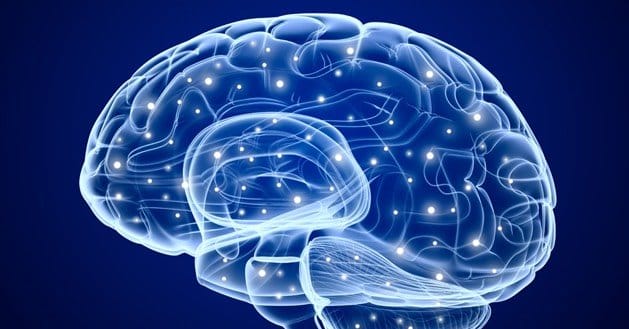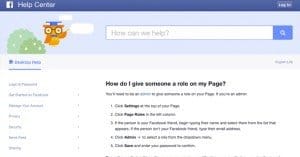 Written by ContentPowered.com
Written by ContentPowered.com
Facebook’s algorithm is surprisingly complex, and with good reason. Much like Google’s constant war on black hat spammers looking to abuse their system for a quick buck, Facebook has to deal with an audience of millions hiding a few bad apples. In order to combat spam and low quality posts abusing the system, it’s is necessarily complex. It is also constantly changing, both as Facebook refines their algorithm and as new technologies are added to the platform, like the emergence of video over the last few years.
Fortunately, it’s not all a mystery. Some light has been shed on various aspects of the algorithm at various times, and it all comes together to paint a somewhat coherent picture of how things work on Facebook.
1. Facebook’s Feed is Highly Curated
How many posts would you say you see on your news feed in a given day? Chances are if you counted, you’d come up with a number around 100, maybe more if you’ve really dug into exploring what your friends have to say.
That number is just a fraction of what’s really posted by everyone you’re friends with and everyone you’re connected to, combined with all of the promoted posts you’re a possible target for. That number can reach as high as 1,500, if not more. The algorithm is designed to take a look at those 1,500 posts and determine, based on characteristics such as timeliness, degree of attachment, past engagement and promotion, and figure out which 100 or so are worth displaying.
This is the essence behind Facebook’s declining organic reach, by the way. So many people are posting so much every day that it’s impossible to display it all; you need to have some form of curated experience for it to be valuable in the slightest. Without the algorithm, maligned as it is, business reach would be even lower.
2. Facebook Posts Don’t Last Long
On average, a single Facebook post might be visible for a few hours. If you’re posting in the middle of the night, during off-peak hours, it will be visible for a little longer. If you’re posting during prime time, right when everyone else is posting as well, you’re going to cut your visible time in half.
You can expect, as long as Facebook is growing in both usership and business adoption, that the visible lifetime of a post is going to keep going down. This means it will be more important than ever to promote your posts. Promoting posts makes them visible to more people for a longer time, as ads rather than just as organic posts.
You can make your posts last a little longer by increasing your affinity, and by making those posts the right kind of posts. Affinity comes from engagement; boost your engagement to make your posts live longer. Weight comes from posting images or videos instead of text posts or links.
3. Not All Engagement is Created Equal
One of the key areas of Facebook’s algorithm is affinity, which is a measurement calculated between your page and each individual user on that page. Every user has an always-changing measurement of their connection to your page.
Affinity is increased by engaging with a post, and it’s decreased by ignoring posts, reporting them or blocking them.
However, not all forms of engagement act equally. There are a number of different types of engagement, some better than others.
- Likes are basically the least powerful and least effective form of engagement, for a number of reasons. For one thing, they’re passive. A user clicks like, puts the post out of mind and moves on. Nothing more comes of it. For another thing, they’re not hard to purchase, both legitimately and “illegally.”
- Clicks are on par with likes, but they have more off-site potential. A click on your link taking a user off-site has the potential to turn into a conversion, though it’s not guaranteed.
- Shares are much more potent; not only is the user saying they like your post, but they like it enough to share it with their own friends. Often, they add a caption to the link as well, to give it some extra oomph.
- Comments are the most potent, particularly when they’re part of a conversation. Repeated comments are even better than single comments, because they represent a deep interaction with the brand.
4. The News Feed Evolves
As you use Facebook throughout one browsing session, all of the variables that make up the order and scale of posts in your feed change. Your affinity with certain people increases, decreases with other people, and changes as more posts are viewed, clicked, liked, shared, commented on and interacted with in other ways.
Facebook takes into account the last 50 or so actions you have taken on your page in order to continue to calculate the best posts to show you. This is most easily seen when you like a new page; you’ll immediately begin to see more posts from that page in your feed, even if you had never seen something from them before.
5. EdgeRank Is Not Just for Marketers
EdgeRank governs everything, even peer to peer communications. When you make a post as a regular user, EdgeRank calculations are made to determine where your post should be displayed and how prominent it should be.
Facebook calculates four factors, primarily. First, they check your previous interactions with other people. More past interactions means a higher likelihood of the post being displayed. Facebook also checks interactions with that type of post; some people hate videos, some prefer images, some never click links, etc. Facebook won’t display link posts to someone who hates them.
Third, Facebook checks other people’s reactions to the post. A post accumulating more likes and shares will be given a higher position in the feed. On those same lines, negative feedback such as reports or blocks are also considered.
All of these factors are constantly being calculated for every post and every connection between any two entities on Facebook. Every person has an individual calculation for every other person or page they follow or are friends with.



